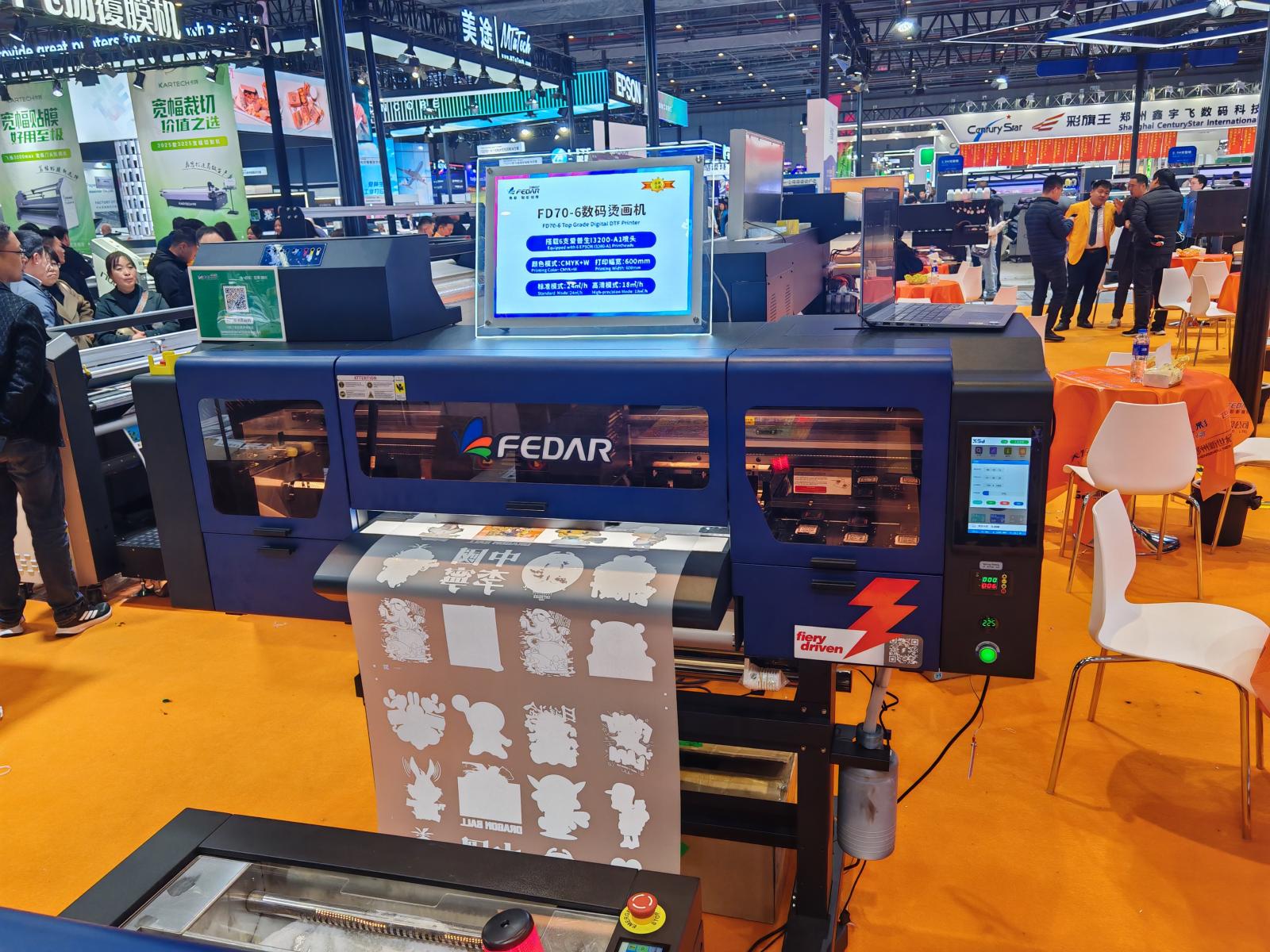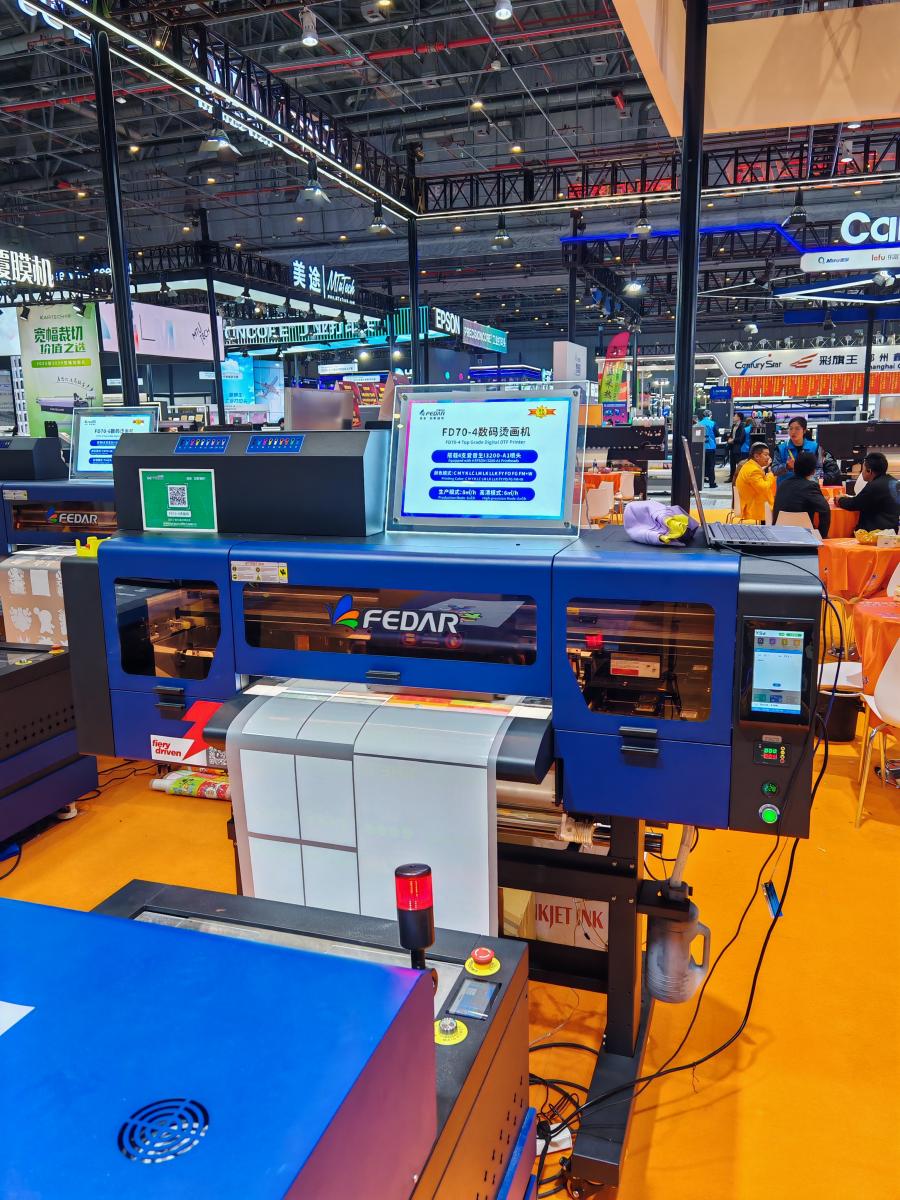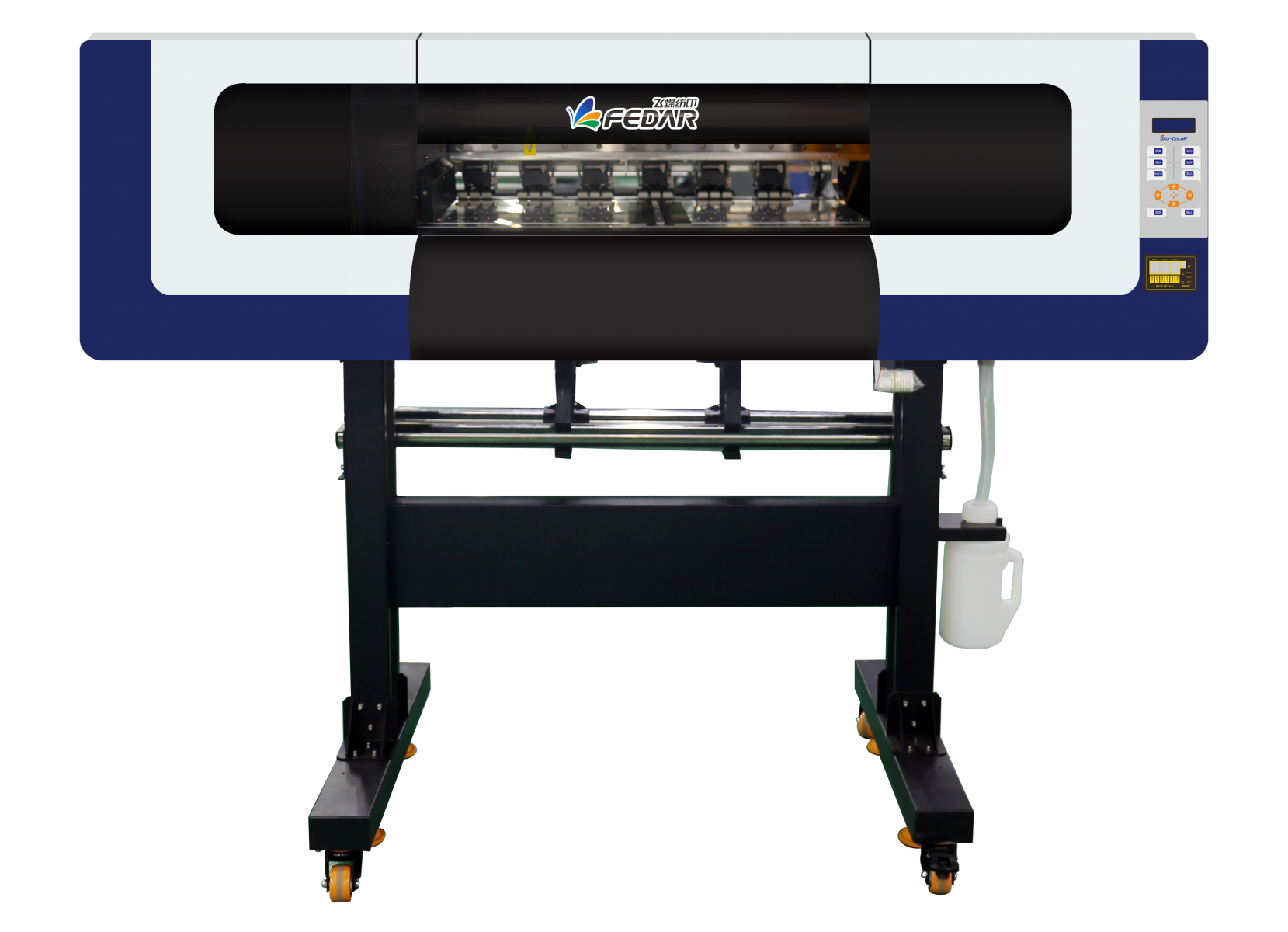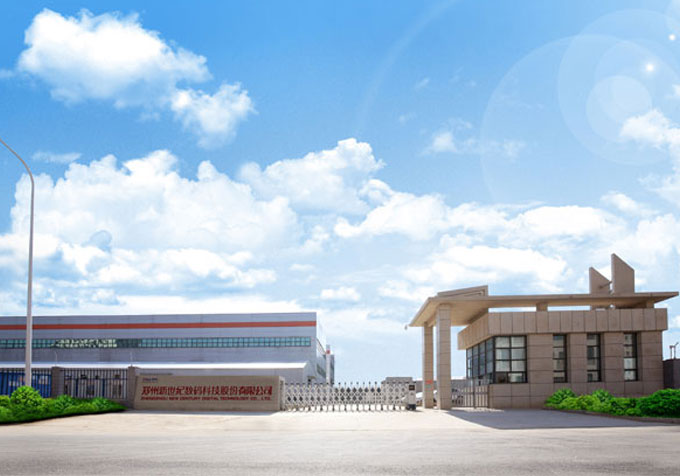Custom Product Manufacturers’ Choices in the Face of Market Pressures
Every year, custom product manufacturers face increasing pressure to produce custom products faster, more efficiently, and at lower costs.
Severe Screen Printing/Direct-to-Print Bottlenecks
Over time, the manufacturing process for custom products has shifted from direct screen printing, which requires tedious setup and use of printing plates, to direct digital imaging. However, neither process fully addresses all the issues required for “instant” apparel and accessory decoration. Both systems are slow when processing short runs of shirts while allowing for maximum garment variation.
For short runs, screen printing requires too much time and labor costs while also being limited in color options. For large production runs, direct-to-ink printing (DTG) faces difficult-to-justify ink and pre-processing expenses. In addition, both systems require the hiring and training of skilled workers.
Examples of medium to high-volume custom or semi-custom decoration needs include custom-designed websites that allow for no minimum order, team sportswear, special event merchandise (e.g., bachelor parties, commemorative shirts, team shirts for fundraisers, family reunion shirts, etc.), and the needs range widely.
Another example is that licensed or stock designs are more valuable when they can be made available on the widest possible selection of apparel. In the past, the choices included trying to hold inventory on multiple colors, sizes, and styles of apparel, or having to produce these relatively expensive and space-consuming direct inkjet prints piece by piece. These devices are also often limited in the types of fabrics they can print effectively (mostly cotton and cotton blends, not synthetics and performance apparel).

The New Paradigm – Direct Transfer (DTF)
Both systems require both the t-shirt and a skilled worker to be connected to the machine at the same time. The operator is tethered to the machine, with little room for other work.
Imagine if the machine could print the image onto film completely independently of the operator?
The operator can spend his time loading the image and adjusting settings for a full day’s work, and then the machine automatically prints, dries, applies adhesive, cures, and rolls up the finished product ready to be cut into transfers. There is little need for operator adjustments throughout the process.
Once the DTF print roll is complete, the remaining work is to cut and heat press it onto the t-shirt (or other garment) as needed. Compared to screen printing systems that require three operators to set up and manage large automated screen printing systems, operators can quickly cut and press transfer images onto shirts of any color in as little as 10-15 seconds.
This approach enables five full lanes of garment assembly. Each operator focuses on the assembly and placement of transfer images for a specific order, without having to wait for one order to be completed before moving on to the next.
This workflow is more flexible and scalable. In the case of urgent work, you can even reassign unskilled workers to additional heat presses to maximize the critical path and ensure the job is completed smoothly.
Problem Clear
There is a growing market demand for variety, full color, medium to very high levels of customization, fast turnaround, and competitive pricing. Existing methods range from labor-intensive screen printing to digital printing methods that are limited by fabric types, space inefficiencies, high equipment costs, and high labor costs due to the skill level required of operators.
The market was looking for an equipment solution that:
Low purchase and operating costs
Easy to master
Full customization capabilities
Efficient use of space
Quick production outputIn addition, the market needed software and workflow solutions that integrated with its order system to reduce unnecessary human interaction in the order-to-production phase. Finally, companies wanted to reduce labor costs by reducing the need for highly skilled operators.
Solution Clear
DTF (Direct Transfer) printers are capable of producing 150-300 square feet of output per hour, supporting a virtually unlimited choice of fabrics.
Its time-tested transfer process (using the same adhesive solution as screen printing transfers) and fast and easy imprinting scheme (only 10-15 seconds) do not require highly skilled operators and have low output costs.
Compared to direct inkjet printing, DTF printing can produce 3-5 times more output in the same workspace, without the need for pre-processing. Software solutions for variable data, images, serial numbers and barcodes/QR codes are also available.
Fedar provides training and support from trusted industry suppliers with hundreds of years of collective experience in the apparel, equipment and graphics industries.
DTF Printing Process
DTF printing has evolved from wild-cooked solutions based on modified Epson desktop printers and manual adhesive application to specialized custom printers, adhesive applicators, and curing dryers.
The digital image is printed backwards on PET (polyethylene terephthalate) film and covered with white ink, which remains tacky until excess powder is removed by vibration and then cured. The finished image is trimmed and heat-pressed (about 10 seconds) with durability and feel comparable to direct screen printing.
The software in the Fedar solution uses materials efficiently, reduces waste, increases profits, and can be integrated with the user's order system to quickly transfer orders from the web to production without human interaction until ready to release the print.
DTF Printing Explained in Depth
DTF printing uses an inkjet printer to print water-based pigment inks onto PET film. PET film is widely used because of its excellent dimensional stability and non-toxicity when heated. The image is printed in a mirrored manner, that is, "face down" on the PET film.
The last color printed is usually a slow-drying white ink that remains tacky to accept a powdered binder (a hot-melt powder made from a polyurethane resin). Once the unbound powder is removed by sprinkling the powder over the tacky printed image and shaking/vibrating the film, the film is passed through a heat tunnel, which causes the binder to melt and bond with the ink. Upon exiting the tunnel, the printed image and binder cool and are ready for application.
The application process is simple: cut the DTF transfer from the roll, heat press at 325°F for 10-15 seconds, and let cool. Once the printed image is completely cool, peel off the PET film, and your garment is finished. In some cases, after the PET film is removed, the shirt is placed back on the heat press and a piece of baking paper or other curing paper is placed over the image and pressed for another 10 seconds to ensure the transfer is secure. Wait 24 hours before washing.

Advantages of DTF over DTG Printing
Both DTG and DTF printing offer short-run, high-color garments to their customer base. Graphic preparation is essentially the same, as is the printing technology (inkjet). Even the inks are very similar—DTF inks are essentially water-based pigment inks with no added binders (polymers).
DTF is faster at processing multiple prints than DTG.
Most DTF printers are capable of producing 300 (or more) 12"x12" images per hour, while a single DTG printer can only produce 20-60 per hour.
DTF printing does not require a separate pre-treatment process, while DTG does, which means an extra piece of equipment and a potential failure point, as well as increased time (pre-treatment application and drying/pressing usually take at least 1 minute).
DTF printing generally has higher detail retention than DTG printing. Since the image is printed on a film rather than directly on the fabric, there is less dot gain, resulting in sharper details in DTF printing.
In most cases, DTF printing has better stretch resistance than DTG and screen printing, avoiding cracking or separation.
DTF printing is able to accommodate a wider range of fabric types, while DTG printing faces issues with performance apparel, polyester, and tri-blend materials.

Why choose Fedar's DTF?
There are many options for DTF systems on the market. What motivates people to choose Fedar as their DTF solution? Here are a few reasons:
Experience: Fedar has been providing graphic output solutions for nearly 25 years and has been providing digital printing solutions since 2005.
Full Support: Fedar not only provides equipment, but also includes lifelong training and support (not time-limited like many companies). Fedar also provides the required consumables and a full line of accessories and clothing to complement the equipment.
Professional Team: Fedar's employees have hundreds of years of experience in the industry. Interacting with people in the decorative clothing industry with 10, 20 or even 30+ years of experience provides different levels of assurance for those looking to solve a problem or expand their business.
Strategic Cooperation: Fedar works with industry-leading suppliers, and the consumables used in Fedar DTF solutions come from Dongman Koda, a leader in the digital imaging industry.
Quality Assurance: All inks used in all systems are manufactured to Koda specifications and batch-quality tested in the United States by Koda chemists.
Environmentally Friendly: All inks, white bonding powders and films are Oeko-Tex certified or in the process of certification.
Fast Delivery: All inks and consumables are stocked in the U.S. and delivered quickly through Fedar’s supply division, Colman and Company.
Performance Matched: Colman solutions are performance matched solutions for inks, films, and adhesives, ensuring consistent results every step of the way, validated multiple times to ensure consistency from batch to batch, job to job.
Fedar not only seeks industry leaders as suppliers of consumables, but also partners with leaders in the digital imaging software industry, such as CADlink Technology Corporation. CADlink has a strong reputation in digital printing software, especially in direct-to-print software and industry-standard solutions for large-scale eco-solvent, UV, and white laser toner printing.
Fedar’s DTF RIP software, developed in partnership with CADlink, is included with every DTF printer. CADlink produces software for Fedar’s UV, DTG, and white toner printers, and currently delivers over 100 packages per month with Fedar’s complete printing solutions. No company has more experience in this field than Fedar.
Why is DTF considered a digital improvement over traditional processes?
Basically, the process of printing the image onto the PET film face down, sprinkling a polyurethane bonding powder, heat curing the powder onto the ink, and then stamping onto the garment is exactly the same as the screen print transfer/plastic transfer process that has been used for decades.
The only real difference between the two is the way the image is transferred to the PET film - DTF uses digital inkjet technology, while screen printing is a manual process.
DTF printing essentially applies the benefits of digital technology to a time-tested (analog) process, allowing for a wider range of color and image variations.
If there's anything we can do to further showcase machines' features, please let us know.
Email: sale@fedar.net
Whatsapp:
http://wa.me/8615515715397 Our company has over 30 models of printers with independent intellectual property rights and patents. Marketed under the esteemed brands of
Skycolor,
Stormjet, and
Fedar brands, these printers cover a wide range, including digital textile printers, UV printers, eco-solvent printers and more. Known for their exceptional quality and performance.





